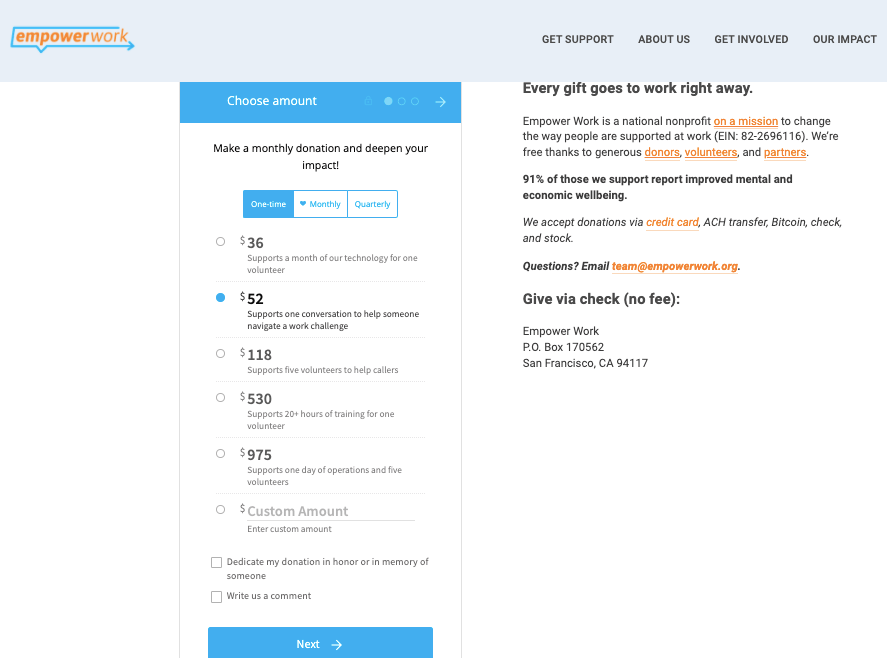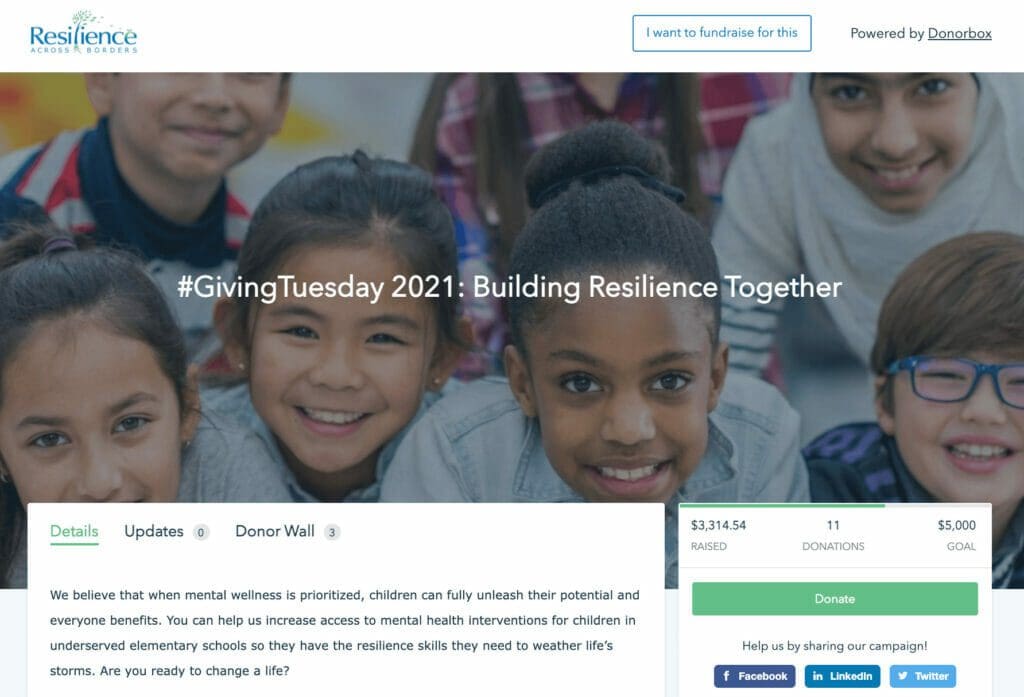A nonprofit’s end-of-year campaign is often its largest fundraiser of the year. The generosity of the season benefits many organizations, and they depend on these campaigns to help finish the year strong. Planning for a year-end fundraising campaign can start with your annual budget, but there are other methods and tips to put into practice. It’s also important to start planning early, so keep some ideas in mind this year to help you get ahead in 2022.
Need some input? Here are a few steps nonprofits can take to streamline their campaigns and effectively raise funds for the organization.
Build on past year-end fundraising campaigns
Creating a year-end campaign has many steps. But the goal of year-end is to build a fundraising campaign that’s designed to attract more donations and makes giving very easy for your supporters. Start with some research. How many donors have given in the past for this type of fundraiser? What benefits can your nonprofit gain? It’s best to start by examining past year-end campaigns to see how they performed and where you can improve.
You should also analyze past donation information to see the number of donations and the amounts. From here, you can decide on the programs that you should promote and the amounts you can include on your donation form. Once you get an idea of which programs gained the most attention in the past campaigns, you can convince donors to give more by adding the reason for giving along with each suggested amount.
For example, if your donors are interested in providing education to children, give them an opportunity to donate specific amounts to pay for educational materials or teachers’ salaries. By attaching an amount to a cause, donors can see where their gifts are going. This could make them feel more inclined to give.

Pro tip: It is best to start with the average amount and increase amounts from there by reasonable degrees. For instance, if most of your donors gave $100 last year, your options for donations could be $100, $150, $200, $250, $300, and $500. This grouping encourages donors to give more if possible. Always remember to give donors the option to add their own amounts.
Clean your database and prepare your mailing list
Now is the time to clean up your database system and track and segment donors. Before sending out any campaign material, you need to better understand which donors are more likely to give and at what amount. Use your donor management tool to analyze the donation data. For instance, by segmenting donors by donation amount or programs they find interesting, your year-end communication to them should be personalized to have a greater effect.
To help clean up your database, you can ask several questions:
- How often does the donor give?
- What is the general amount they give at one time and throughout the year?
- Do they give to a specific program?
- Have they volunteered or shown interest in volunteering in the past?
- Do they follow the nonprofit on social media?
The answers to these questions can help you segment the donors into groups and send out customized marketing campaigns to gain their attention.
Pro tip: Automate your year-end receipts ahead of time since your donors will be looking for year-end receipts for tax purposes. Donorbox helps you automate this process so you can focus entirely on your fundraising efforts.
Write year-end fundraising appeal and message
Now that your donors are segmented into groups, it’s time to create targeted appeal letters toward each group. Be specific when creating these pieces and look for different ways to encourage giving. Some of your donors would rather give offline, so make sure you include the information like your address. Others will feel better donating online, so when creating your appeal letters and emails, include a link or description of how donors can give on your website.
When writing your appeal letters or creating marketing material, you may also want to include other ways donors can get involved with your organization. Do you have any upcoming events? Do you need volunteers for a program or activity? By including these in your end-of-year campaign, you are letting people know there are several ways they can support your organization. During the planning stage, you also may have a better idea of what you hope to gain from each group of donors in the future and can include a hint or request in your acknowledgment letter.

Take the time to write an acknowledgment letter for each donor segment. In addition, consider adding a donor wall to your online fundraising page. This will show recognition for your donors and show remembrance for their gift.
Connect with donors looking to play a larger role in your work
Year-end is the ideal time to mobilize your supporters. With the giving season at its peak, donors are as likely to give as they are to raise funds for your organization. This might be especially true for donors who are looking to play a larger role in your nonprofit’s mission.
Instead of simply asking for a donation, ask your donors and supporters to join your peer-to-peer fundraising campaign. Your appeal letter can give them information on how they can join your fundraising campaign.
Peer-to-peer campaigns are easy to start. Choose what program you want to raise funds for through peer-to-peer. From there, you can create your main peer-to-peer campaign page. Start inviting your donors and supporters to become fundraisers for your cause. If you have specific donors with a large social media following and have shown interest in doing this, now is the time to connect with them.

In addition to sending them an appeal letter, give them a call and walk them through how easy it is to raise funds for your nonprofit. To encourage their involvement, send them all the details about your cause and the campaign. Make sure you become easily reachable as they will need you to provide them with any new information that can help them run a highly successful fundraiser.
Share your progress
Keep donors aware of your fundraising efforts and successes during your year-end campaign. Donors want to know how the organization is doing and are willing to help nonprofits reach their goals. Remember to let donors know how close you are to meeting your annual goal. Let them know the amount needed to meet that goal by the end of the year. To encourage even more action, it’s helpful to include your plans on how you will meet your goal and how they can help.
Did you mention your fundraising goal in the appeal letter and marketing material you sent out? It’s a great idea to keep donors updated on how well it’s going. One way to do this is with a donation thermometer.

Final thoughts
Year-end campaigns can be highly successful if well-planned. Nonprofits that take the time to research their donor base and find the ideal way to reach each group will have better success than others. By analyzing your past fundraising trends and understanding your donor base, you can create a truly effective year-end campaign in 2021. This year is all about mobilizing your existing supporters to spread the word and acquire more support.
*This spotlighted blog post is courtesy of Donorbox
About the Author
Raviraj heads the sales and marketing team at Donorbox. His growth-hacking abilities have helped Donorbox boost fundraising efforts for thousands of nonprofit organizations.
The post 5 Steps for Streamlining Your Year-End Fundraising appeared first on Nonprofit Hub.

0 Commentaires